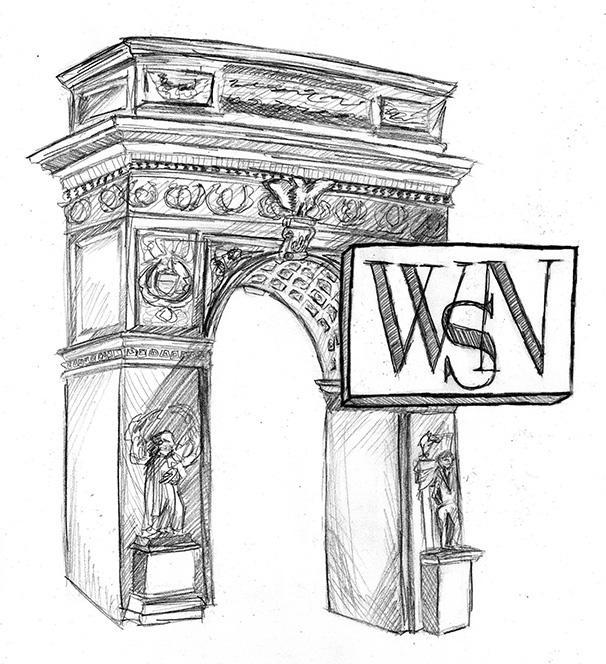Earlier this week, eight people tragically lost their lives in an Atlanta-area massage business shooting rampage. Six of the victims were women of Asian descent and the killer was white. Although the gunman deliberately targeted businesses owned and operated by Asian-American individuals, he claimed that his actions were not racially motivated and rather the result of a sexual addiction.
In the words of essayist Cathy Park Hong, the media is already “trying to whitewash this incident … saying it’s not racially motivated.” This phenomenon has been evident throughout the coverage of the attacks. On Wednesday, Jay Baker, a captain with the Cherokee County Sheriff’s Office, assured reporters that there was no immediate reason to believe that the white shooter had any racist motivations. Baker described the gunman’s actions as the result of “a really bad day.” This type of sympathetic language is a luxury reserved only for white people. If the perpetrator wasn’t white, police would never describe the massacre as the natural consequence of a person at the end of their rope.
As news outlets expanded their coverage over the course of the week, some focused on the fact that the shooter was an evangelical Christian who attended the Crabapple First Baptist Church, with some insinuating that shame about his desires prompted the killings. In a piece by the Washington Post, the suspect is described as “active in his Southern Baptist congregation,” emphasizing the fact that he once spent his free time “stack[ing] chairs and clean[ing] floors.” Coverage also includes testaments by the people in the killer’s life who mention his nerdiness, innocence or faith. By creating an atmosphere where his faith and benevolence are highlighted, the media perpetuates the narrative that it is especially shocking and disruptive when white men commit such crimes. As a result, justice for the victims are lost and criminals are not held accountable.
This rhetoric sets a dangerous precedent. The gunman’s sexual preferences and fetishes align with a long history of commodification of Asian women and their bodies. By hesitating to identify the incident as a hate crime, the media neglects the longstanding struggles of Asian American and Pacific Islander women in America.
Asian American organizations have criticized the insufficient media coverage of the surge in Asian hate crimes since the beginning of the pandemic. Many only learn of such hate crimes through social media and petitions from Asian American civil rights leaders as a consequence of the silence from most mainstream media outlets on the topic. This silence is despite the 3,800 reported instances of discrimination against Asians in the past year.
The alarming state of media coverage of anti-Asian discrimination can be partially explained by the unique history of Asian Americans.
Beginning in the 1850s, following a large influx of Chinese immigrants, the racist trope of Asians coming to steal white jobs was created. These racist sentiments were first codified into law with People v. Hall, which ruled that Asian people could not testify against a white person in court. Infamously, in 1882, Congress passed the Chinese Exclusion Act, which restricted Chinese immigration for the next 60 years. Anti- Chinese sentiment and discrimination was so effective that Chinese immigration declined from 39,500 in 1882 to only 10 in 1887.
By 1924, with the exception of Filipino nationals, all Asian immigrants were denied citizenship and prevented from marrying Caucasians or owning land. In 1942, President Franklin D. Roosevelt signed Executive Order 9066 into law, authorizing the incarceration of suspected enemies. The vast majority of those incarcerated were individuals of Japanese descent. However, following the Second World War, the narrative around Asians shifted.
“During World War II, the media created the idea that the Japanese were rising up out of the ashes [after being held in incarceration camps] and proving that they had the right cultural stuff,” described Claire Jean Kim, a professor at the University of California, Irvine. “And it was immediately a reflection on Black people: Now why weren’t Black people making it, but Asians were?”
Asians were not seen as the threatening “yellow peril” but rather a “law-abiding, peace-loving, courteous” group that has successfully assimilated. This model minority myth — which has created a perception of success among Asians — is commonly used to downplay the effects of racism in the struggles of other minority groups, particularly for Black people.
The model minority myth contributes to this crisis in reporting. Cayden Mak, the executive director of an Asian American organizing group caled 18 Million Rising, pointed to the model minority myth as a reason that anti-Asian discrimination has been underreported, saying that it helped keep the story “from being a big deal” prior to the Atlanta shooting.
It ignores the fact that Asian Americans have the highest level of intraracial income inequality and are more likely to work in low-wage industries, leaving them more vulnerable to the pandemic. Reporting the spike in anti-Asian hate crimes or framing mass shootings against Asians as racist acts would undermine the model minority myth.
Given the recent tragedy in Atlanta, it is clear that America cannot use the model minority myth to diminish racialized violence against Asian Americans. Journalists must assume accountability for overlooking the struggles of a marginalized group whose suffering has consistently been erased. The uptick in hate crimes may have brought the issue to the forefront of many reputable publications, but we must resolve to no longer offer empathy to criminals whose actions promote white supremacy. We must not allow shallow media coverage to continue.
A version of this article appeared in the Monday, Mar. 22, 2020 e-print edition. Email the Editorial Board at [email protected].

























































































































































